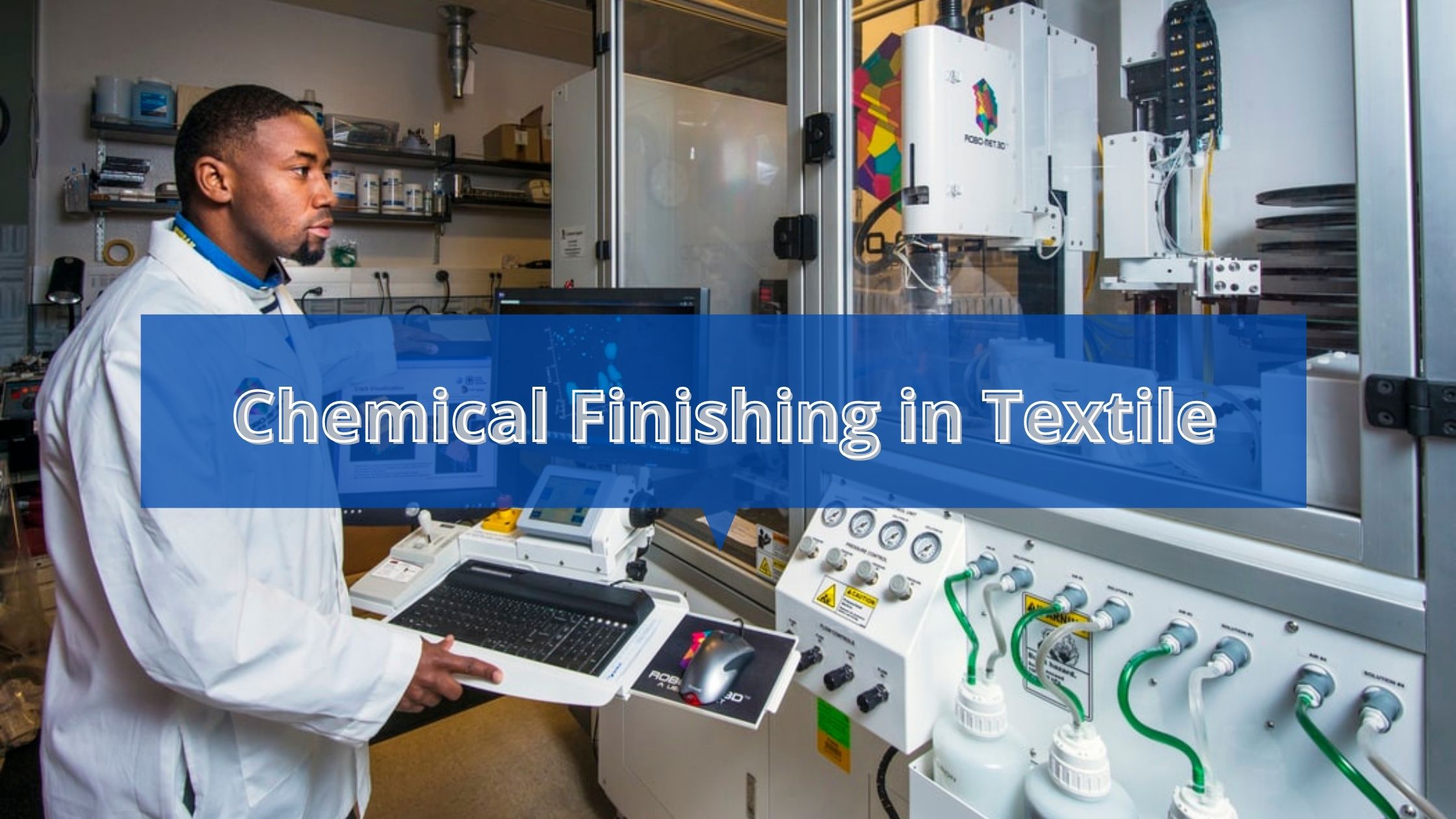Pre-treatment of grey fabric, then thorough coloration of treated fabric and finally the finishing process completes the wet processing of textiles. In this finishing stage, we can impart desirable properties to the substrate. Chemical finishing in textile plays an important role to yield asthetic as well as functional properties to the goods.
Chemical finishing in textile involves the addition of chemicals to textile to achieve desired result. Typically, the appearance of fabric remains unchanged after chemical finishing. But Mechanical or Dry finish uses mainly physical means to change fabric properties and usually alters the fabric appearance as well.
Mechanical finishing includes calendering, emersing, compressive shrinkage, raising, brushing, shearing etc. Often mechanical and chemical finishing overlap. Some mechanical finishes need chemical application. So, chemical finish plays an important role in textile finishing field.
In this article, we will briefly discuss about chemical finishing.
General requirements of chemical finishing in textile
There are some basic requirements of chemical finishing in textiles. They are divided in two effects: Primary effect and secondary effect. Here’s they are:
Primary effects of finishing
- High effectiveness at lower expenditure
- Adapt according to customer choice and ease of use
Desired secondary effects of finishing
- The finish must be applicable on all types of fibers and substrate form like yarn, woven or knitted structure, garment or apparel or non-woven goods
- Garments must posses high performance property when subjected to washing or dry cleaning
- Never compromise with the quality like hand feel, abrasion resistance, tear or tensile strength etc
- Undyed grey fabrics should not face any yellowing
- No impairment in colorfastness is required
- Finishes must not interact with the color of the textile goods
- Handling should be safe and easy
- Non-flammable finish is required
- Finishes must be accomplished following standard method and equipment at lower costing
- Up on storage, finishes must exhibit high stability whatever the condition (temperature, stress etc) is.
- Optimum application of finishes either on the surface or inside of the fabric is a must
- The finish must be synergistic or should have compatibility with the other finishes
- Easy cover up of faults if occurred such as stain removal
- No toxicity
- Environment-friendly
- Absence of volatile component
Importance of chemical finishing in textile
- Chemical finishing in textile plays an important role but the recent trend to “High Tech” product adds a great popularity to it.
- With the increase of high performance textiles, the popularity of chemical finishing has also increased.
- The chemicals and auxiliaries that are utilized in a year is about one-tenth of the world’s fiber production
- About 6 million tons of chemicals are consumed for 60 million tons of fiber
- The consumption of chemicals in finishing covers 40% of total textile auxiliaries.
- Within the textile finishing group, the product breakdown, based on TEGEWA, is given as a survey in the following table.
- In terms of value, the repellent group is the leader with the highest ratio of cost per amount.
- This reflects the relatively high cost of the fluorochemical subgroup of repellents.

Source: Market Research Future
Importance of the finishing product groups in order
Value importance | Finishing product group | Value% | Amount% | Euro/kg |
1 | Soft handle products based on: silicones, including elastomeric, cationics, non-ionics, without silicones anionics | 19.9 | 22.1 | 2.10 |
2 | Repellents based on: Fluorocarbons, paraffins, silicones | 15.2 | 4.1 | 8.50 |
3 | Flame retardants | 13.9 | 13.9 | 2.30 |
4 | Products for coating, laminating, fiber and thread bonding | 13.8 | 18.4 | 1.70 |
5 | Products for easy care and permanent press finishes | 7.9 | 13.5 | 1.30 |
6 | Hand builders | 7.0 | 10.0 | 1.60 |
7 | Antimicrobial products, including protection from germs | 1.9 | 0.3 | 14.20 |
8 | Antistatic agents including carpet finishing | 1.8 | 2.3 | 1.80 |
9 | Non-slip agents | 1.2 | 1.4 | 2.00 |
10 | Products for soil-release, remainder, including brighteners, products for sewing thread preparation, anti-felting of wool, carpet back-coating, hydrophilation, delustering and brightening, foaming of finishes | 0.04 | 0.01 | 6.70 |
Different types of chemical finishing in textile
- Mercerizing
- Parchmentizing
- Flame Retardency finish
- Water Repellency finish https://www.britannica.com/topic/water-repellent-fabric
- Silicon treatment for hydrophobic effect
- Fluoro chemicals for soil release & soil resistance
- Softening
- Certain phosphorous & nitrogen compounds for flame retardant
- Hydrophilation
- Foaming finish
- Finish with non-slip agents
- Wrinkle free or crease resistant finish
- Anti-microbial finish
- Anti-static finish
To Wrap Up!
Chemical finishing, an important field for textile finishing covers a broad market share. In our subsequent articles, we will know more about it.
You can also check: Types of Textile Finishing [Understanding the background]


At what stage is the greige fabric dyed? And when is the dwr coating applied?